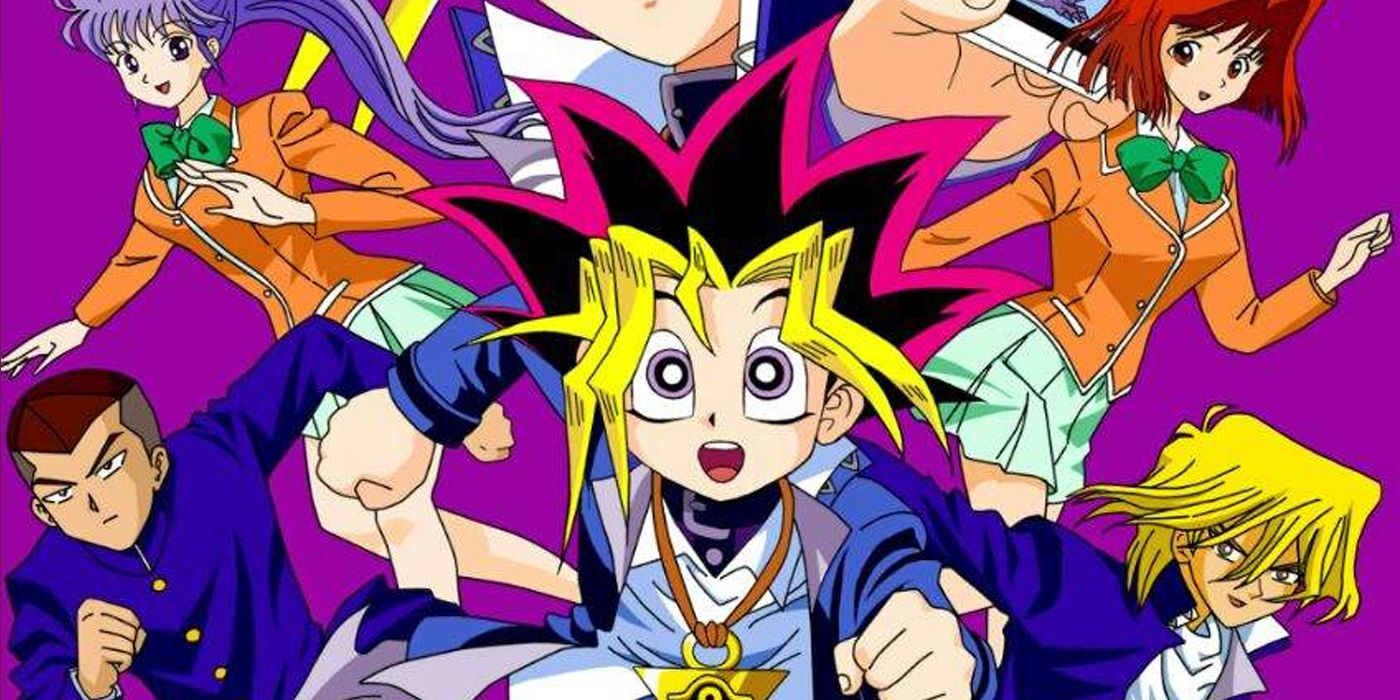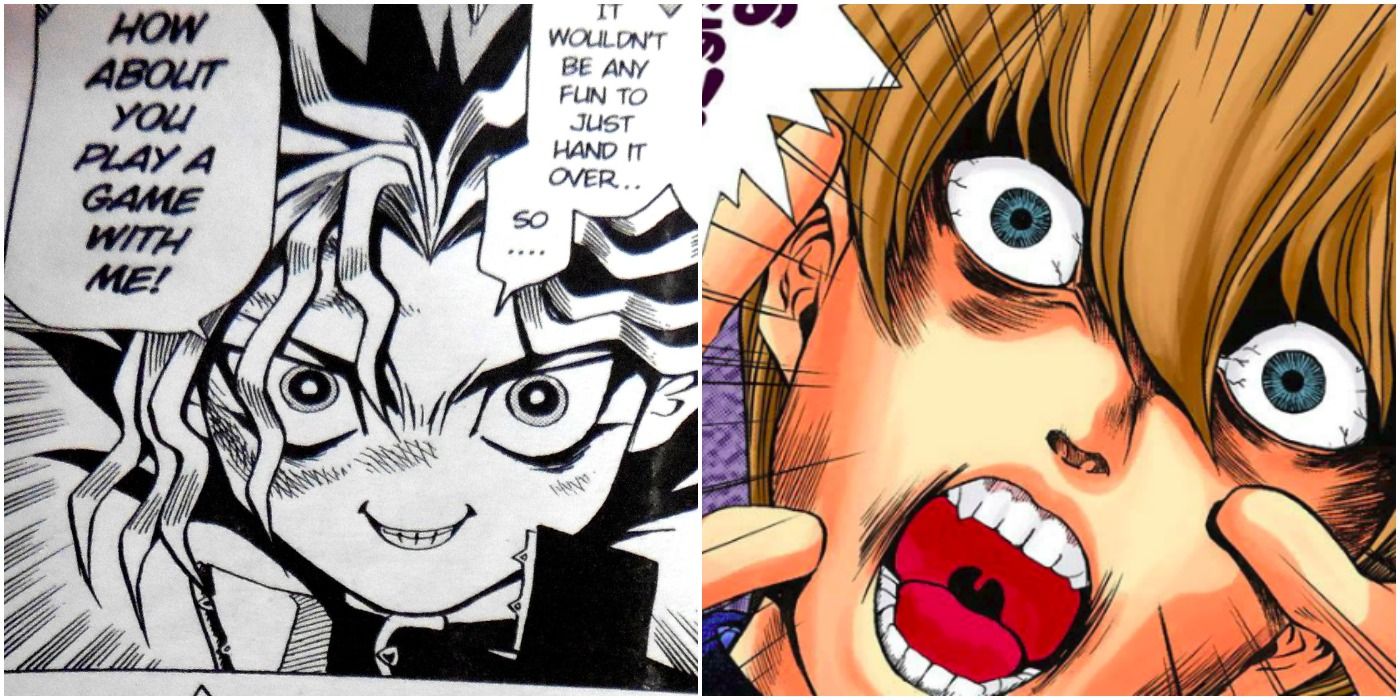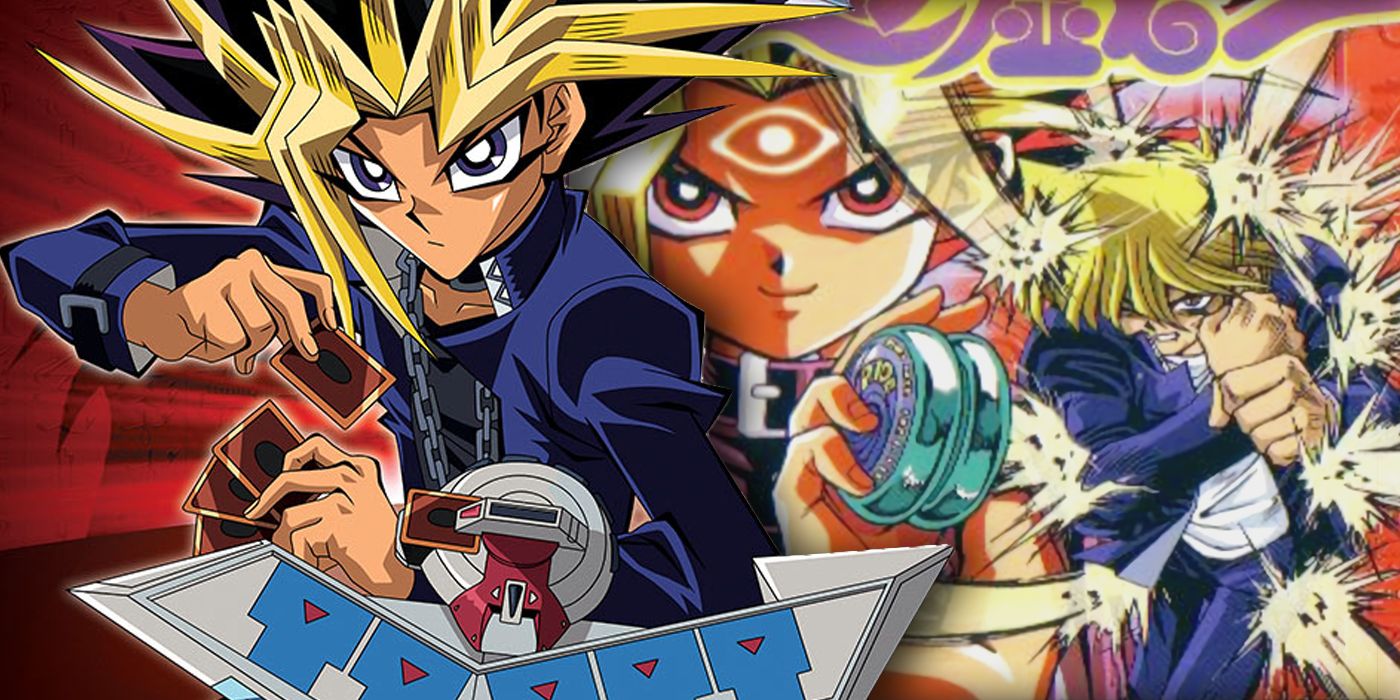With Yu Gi Oh! Go Rush! set to premiere this coming April and the release of Master Duel causing both current and long lapsed fans of the game to be reinvigorated once more, it’s the perfect opportunity to take a step back and re-analyze the roots of this beloved franchise.
Today, Yu-Gi-Oh! is synonymous with its collectible card game. Nearly every series, movie, spin-off or piece of merchandise that has been released to date has revolved around its iconic selection of cards and the characters that play them. While hardcore fans of the series are likely aware of more obscure shows such as Capsule Monsters and Dungeon Dice Monsters, fewer people are familiar with Yu-Gi-Oh! Season 0.
In 1996, the original manga, written by Kazuki Takahashi, was released in Shonen Jump. However, unlike its successive series, it would only feature Duel Monsters (or Magic & Wizards in the manga) within six of its 59 chapters. The rest of Takahashi’s initial stories exhibited a range of games, including table hockey, digital pet simulation devices and even yo-yo battles.
While the series’ familiar cast of characters, motifs of friendship and references to ancient Egypt can still be seen within Takahashi's inaugural effort, both its tone and structure are wildly different from that of subsequent hits such as Yu-Gi-Oh! Duelist Kingdom. The mangaka admitted in Yu-Gi-Oh!’s 36th volume that he had originally intended to create a set of horror stories, and it isn’t hard to see this when inspecting many of the tales contained within these early episodes.
Fans of the show are likely to view Yami Yugi as a good-natured character who continually references friendship and the “heart of the cards.” However, his introduction establishes anything but the heroic. Instead, viewers witness the soul of an ancient Egyptian psychopath who, through the body of an 18-year-old boy, maims or kills anyone who stands in his way. Although each villain’s comeuppance is largely deserved due to the heinous acts they take part in, the brutality at which justice is meted out by the protagonist is often a shocking aspect for many fans who uncover this underappreciated gem.
Takahashi’s convention of turning his childhood pastimes into acts of violence is such a juxtaposition that the stories remain light-hearted enough for a younger audience. However, it’s not a surprise that this set of episodes was not aired to Western audiences. Instead, studios opted to wait to release the more toned-down Yu-Gi-Oh Duel Monsters series in 2001.
Another notable difference between this season and its modern counterpart is that it is structured episodically. Unlike future episodes, each story is largely self-contained in which, much like series such as Case Closed, characters are placed within a new environment and must overcome a particular set of challenges every few episodes. This enabled Takahashi to explore a variety of his favorite games without the need for drawn-out exposition as to why the protagonists had suddenly taken up a new pastime.
This lends itself heavily to the show's high school setting and acts as a reflection of many people’s own childhood experiences, in which they would abruptly become infatuated with the latest toy and then subsequently switch to another craze. While Yu-Gi-Oh! has continued to feed into collecting as a form of pastime, this trait is arguably encapsulated in its purest form within the original series.
While the theme of collecting now boils down to characters accumulating cards for the purpose of becoming the best duelist, this series would present hobbyists in a more down-to-earth and relatable fashion. Although Yugi is by no means an average high schooler, his childlike enjoyment for a miscellany of games allows readers to engage with the story even if they’re not devotees of the card game.
Takahashi’s relatively swift departure from his original concept was largely based on his readers' feedback. Initially, Duel Monsters was planned to be phased out after two episodes. However, when Shonen Jump started to receive an enormous number of calls from fans who wanted to know more about the game, how they could play and where they could buy it, they realized they had a hit on their hands.
It’s a shame that this saga could not continue for longer. Today, Yu-Gi-Oh! Season 0 remains an enjoyable watch and is accessible to an older audience, regardless of whether or not they're fans of the current anime or card game. However, without Takahashi’s subsequent stand-out hit, this series would likely have not been as available or appreciated. It would be fun to see Yu-Gi-Oh! return to its roots and create an anime that incorporates a variety of pastimes outside of its stellar card game. However, with the current success of the franchise, it seems unlikely that this will happen any time soon.



